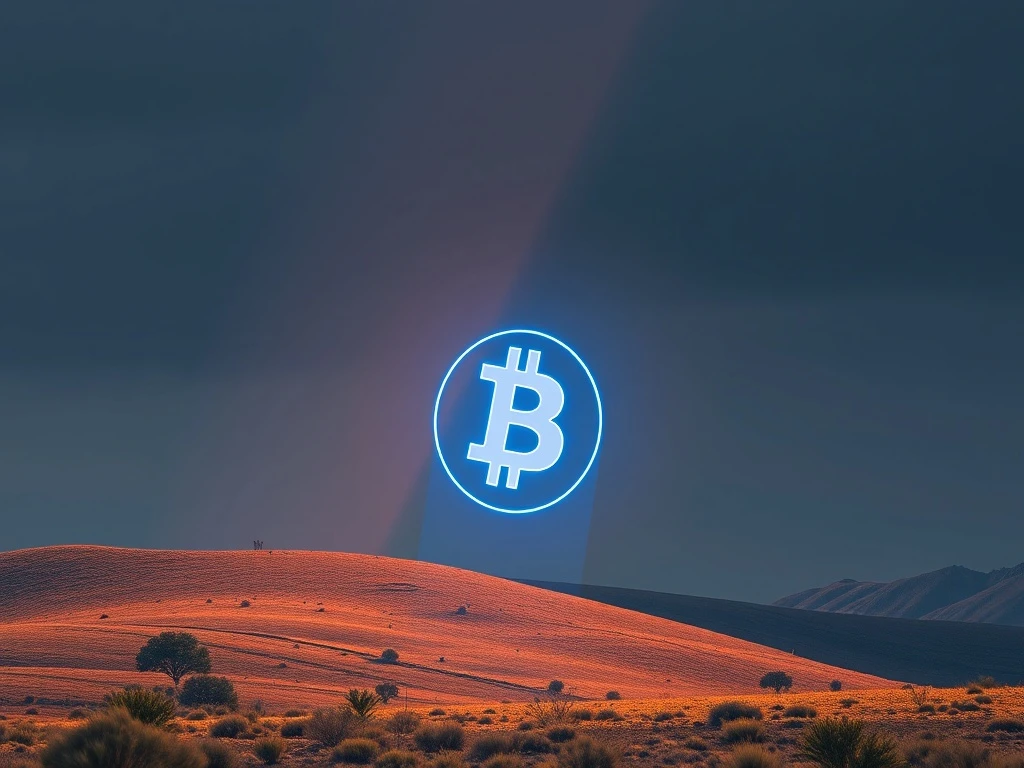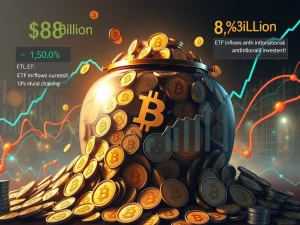Urgent Bitcoin Quantum Threat: Solana Founder Warns 2030 Deadline

The cryptocurrency world often grapples with evolving technological landscapes. Now, an urgent warning from a prominent figure highlights a looming challenge. Solana co-founder Anatoly Yakovenko believes a significant Bitcoin quantum threat could materialize much sooner than many anticipate. He stresses the critical need for the Bitcoin community to accelerate its defenses against advanced computing.
Solana Founder’s Dire Prediction on Quantum Computing Security
Anatoly Yakovenko, the visionary behind Solana, recently voiced a stark prediction regarding the future of digital security. Speaking at the All-In Summit 2025, Yakovenko assessed a “50/50” chance of a quantum computing breakthrough within the next five years. This timeline, he argues, necessitates immediate action. He firmly stated, “We should migrate Bitcoin to a quantum-resistant signature scheme.”
Yakovenko’s concern stems from the rapid convergence of various technologies. The accelerated pace of AI development, transitioning quickly from research papers to practical implementations, particularly alarms him. “It is astounding,” he noted. Consequently, he strongly encourages industry stakeholders to “speed things up.” This proactive stance emphasizes the potential for an unprecedented challenge to existing crypto encryption methods.
The Looming Bitcoin Quantum Threat by 2030
Experts widely agree that quantum computers will eventually possess the capability to crack current encryption standards. This development poses a significant security concern for users across the blockchain industry. While many Bitcoin (BTC) advocates view this threat as a distant future problem, others believe its emergence could be much quicker.
Bitcoin wallets rely on the Elliptic Curve Digital Signature Algorithm (ECDSA) to generate private-public key pairs. Its security rests on the computationally intensive elliptic curve discrete logarithm problem (ECDLP). Classical computers find this problem impossible to solve efficiently. However, quantum computers could potentially overcome this barrier. David Carvalho, founder of Naoris Protocol, suggested in June that advanced quantum computers might “plausibly rip” through Bitcoin’s cryptography in less than five years. Such a development would represent a profound Bitcoin quantum threat.
Addressing the Quantum Challenge: The Blockchain Hard Fork Dilemma
Upgrading a blockchain from legacy cryptography to post-quantum security presents a formidable challenge. Such a transition would almost certainly require a hard fork. A hard fork involves a fundamental change to the network protocol, making previously invalid blocks or transactions valid, or vice-versa. This process requires all network participants to upgrade their software to the new rules. Many crypto communities, however, express strong opposition to hard forks due to their potential for network disruption and community division.
Implementing quantum-resistant measures means adopting new cryptographic algorithms. These algorithms must withstand attacks from powerful quantum machines. The community must carefully consider the technical complexities, governance implications, and potential economic impacts of such a significant change. Thus, the debate over a necessary blockchain hard fork becomes a central point of discussion for the future of Bitcoin’s security.
Differing Perspectives on Imminent Quantum Computing Security Risks
Despite Yakovenko’s urgent call, not all Bitcoiners share the same level of concern about an immediate quantum threat. Blockstream CEO Adam Back, for instance, acknowledges that current quantum computers do not pose a credible threat. He also concedes they will likely threaten Bitcoin’s cryptography in the future. Back, however, estimates this evolution could take “maybe 20 years.”
Furthermore, Jan3 founder Samson Mow expressed less worry about the immediate danger. Mow told Magazine in June, “I think it is a real risk, but the timeline is probably still a decade away, and I would say everything else will fail before Bitcoin fails.” These varying opinions highlight the ongoing debate within the community regarding the urgency and timeline of the quantum computing security challenge.
The Broader Implications for Crypto Encryption and Beyond
The discussion around quantum threats extends beyond Bitcoin. All cryptocurrencies relying on similar cryptographic primitives face potential vulnerabilities. Therefore, research and development into post-quantum cryptography are crucial for the entire digital asset ecosystem. The United States and the United Kingdom are already collaborating on AI, quantum computing, and nuclear energy development, signaling the strategic importance of these technologies.
The potential for a Solana founder warning to catalyze action across the crypto space is significant. It underscores the need for continuous innovation in cybersecurity. As technology advances, so too must the defenses protecting our digital assets. The question remains whether the Bitcoin community can unify and act decisively to safeguard its future against this profound technological shift.
Preparing for the Future of Digital Assets
The urgency highlighted by Anatoly Yakovenko serves as a critical reminder for the entire cryptocurrency industry. While opinions on the timeline vary, the ultimate threat of quantum computing to current crypto encryption methods is undeniable. Proactive measures, including exploring quantum-resistant algorithms and preparing for potential protocol upgrades, are essential.
The debate around a blockchain hard fork to implement these changes will undoubtedly be complex. It will require extensive community consensus and careful planning. However, ensuring the long-term security and resilience of Bitcoin and other digital assets against future technological advancements remains paramount. The next few years will be crucial in determining how effectively the crypto world adapts to this evolving threat landscape.










